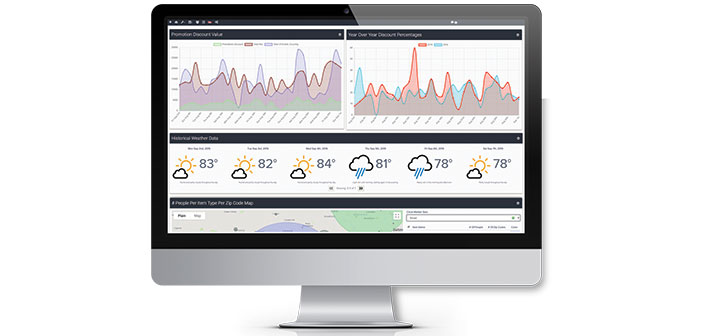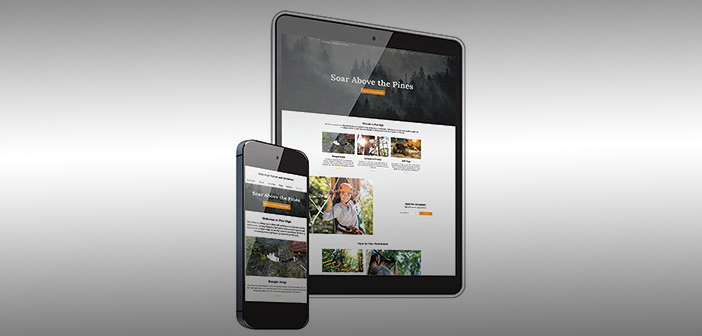While a significant amount of bookings for tours, activities, and attractions are still conducted offline at a walk-up ticket window, most activity operators in the U.S. embrace some sort of booking software system. This enables them to post their product availability, schedule customers on a particular day and time, and accept and process payment online. And these systems continue to become more streamlined, easier to use, and have more capabilities than they did just a few years ago.
Dozens of software brands now exist at a relatively affordable price for operators—whether that pricing model is based on a monthly fee or a per-booking fee.
Ownership, not just the programming, has changed for some reservation software as well. In April 2018, Booking.com acquired FareHarbor, and just 24 hours later, TripAdvisor announced the acquisition of Iceland’s Bokun. That led many to question how alignment between reservation software and OTAs would impact operators.
From consolidation to data optimization, here are the big-picture trends in booking software systems. These trends, and consumer preferences, are pushing operators of tours, activities, and attractions to evolve how they do business—and not always in ways operators like. In the short term, operators tend to focus on more day-to-day software concerns, such as functionality and pricing. But it’s imporant to understand some larger trends that are reshaping the overall booking landscape.
OTA Alignment
The tours, activities, and attractions business includes hundreds of options, ranging from hot air ballooning to zip lining to axe throwing (yes, it’s a thing). And many reservation systems have emerged to serve all the different types of attractions operators.
Consolidation was almost inevitable—especially as OTAs sought (for better or worse) to get more in-destination activities suppliers online, and to expand outside of distribution into the reservation system and booking management space. “This marks a new phase for our business: we’re expanding beyond our core offering as the industry’s largest distribution channel,” said TripAdvisor Experiences president Dermot Halpin in a statement following the acquisition of Bokun in 2018.
Recent developments. The momentum of reservation tech alignment has cautiously continued through 2019, most notably when the Berlin-based GetYourGuide launched its Preferred Partners program with reservation systems Rezdy and bookingkit. This was not an acquisition, but a partnership—operators that use either of these systems have financial incentives and improved connectivity. In touting the program, GetYourGuide emphasizes the importance of independence in reservation systems, to protect against the possibility that OTAs that own reservation systems could use operator data to advance the OTAs’ business at the expense of operators.
Countertrend. While such alignment is occurring, many reservation systems remain staunchly independent, citing the potential for misused data. “Operators often don’t realize that their inventory and their data is highly sought-after—we believe an independent ecosystem is an ideal outcome for them,” says Checkfront CEO Jason Morehouse.
Booking system consolidation—whether through acquisitions or through strategic partnerships such as the Preferred Partners program—will likely continue. Expect GetYourGuide to add more systems to its program, and for further acquisitions by other companies to materialize.
Keep a weather eye. In the short term, such developments may seem less important than a system’s functionality. But all operators should keep a close eye on this trend. As alignments develop, the reservation system or the OTAs that operators work with may start tilting the scales, which could impact an operator’s business.
Improved Data Tools
On the plus side, nearly all of the booking software companies we spoke to are focusing on building products that help operators make better use of their client data. Who are their customers? When did they participate in a tour? How many people were on a tour? What were their preferences? All of these questions and more can be answered by analyzing their booking database through reservation software—and operators have the opportunity to use data to build better, more salient tours.
Guest intel. “With TrekkSoft, operators can access their own booking, sales, and customer data to draw insights from past performance and shape future business strategies,” says Nicole Kow, product marketing lead at TrekkSoft. “In the long run, we want to use this data to inform revenue management strategies and provide in-depth recommendations to our customers to maximize their revenue streams.”
Operations intel. Likewise, The Flybook is working on ways to help operators forecast their future needs, such as staffing and equipment availability, by deeply analyzing their booking data. For instance, operators can layer booking performance from a week in 2018 to estimate how much business they anticipate for the same week in 2019. The software also allows operators to incorporate weather reports into this equation to adjust for foul weather that may have kept groups away.

Analyze booking data to help forecast future needs (here: The Flybook Dashboard).
Group intel. Additionally, says Megan Langer, co-founder of The Flybook, operators can easily access, understand, market to, and send promotions to large school or corporate groups in order to boost group clients—bread-and-butter bookings for adventure park and zip line operators.
Artificial intel. Companies such as Rezgo are incorporating sophisticated methods of data analysis through the use of artificial intelligence. The aim: to allow operators to predict future business, and adjust prices to either maximize revenue when at capacity, or to increase visitation at slack times.
Robert Evans, head of partnerships Pacific U.S. and Oceania for Rezgo, puts this more precisely in software speak: “By using machine learning to analyze data and predict pricing and availability changes dynamically, [Rezgo] improves yields and increases topline revenues,” he says.
“By leveraging aggregate cross-platform data but also taking into account international privacy sensitivities, we can better understand end-consumer intent … to provide our business customers with actionable intelligence that helps them improve customer experience and revenues,” Evans adds.
Translation: The ability to analyze and understand data enables operators to make more informed decisions about their business. And that, most likely, is more reliable than going with gut instinct.
Connectivity: A Multi-Channel Approach
Booking software brands across the industry are aiming to find even more ways to get their operator clients more business. Taking a multi-channel approach to distribution is chief among them.
Buyer’s market. “Competition is increasing in the tours and activities sector,” says Checkfront’s Morehouse. “So it’s more important than ever to take a consumer-first approach in marketing strategy. By leveraging the right reservation technology, operators can offer their guests a seamless way to discover their products, check availability, and complete booking and payment—whether online or offline, direct or through a distribution channel.”
Both Morehouse and The Flybook’s Langer focus on building relationships with all types of OTA distributors to provide maximum exposure for their operator clients. But direct bookings remain a major part of the equation—most operators prefer direct bookings to OTA bookings to avoid the sometimes hefty commission rate.
“OTA connections are important, and the ability for operators to distribute to as many agents online and offline as they can is vital,” says Langer. “But we’re also trying to focus on innovation that will help operators get direct bookings.”
Since many adventure parks during the high season sell out every day, some larger adventure park operators using The Flybook don’t integrate their product with an OTA at all. So Langer and her team focus on empowering them to have a better understanding of where their clients are coming from via business intelligence tools and marketing automation.
Website integration. Systems such as Checkfront, FareHarbor, and others encourage direct bookings by helping operators build beautiful websites that make booking direct as easy as possible.
“After years of watching operators struggle with their online presence, we decided to create Site Builder, explicitly designed to help operators easily create a stunning website for their brand image that’s optimized for accepting bookings,” explains Morehouse of Checkfront. “It’s plug-and-play with templates built specifically for tours and activities businesses, it’s tightly coupled to our booking platform, and has built-in SEO features.”
Omnichannel access. Site Builder is aimed at giving operators the tools to create an omnichannel experience—individual touchpoints, such as e-commerce, social media, physical locations, and mobile—that seamlessly connect for their guests, Morehouse says.
Operators want to place their products in front of as many eyes as possible, and in a marketplace where travelers search for things to do in myriad ways (including word of mouth!), omnichannel distribution is paramount. Reservation tech providers are serving up these options.
Connecting with Google
The recent launch of Reserve with Google—the new tool that enables travelers to book tickets almost immediately after search—shook up the tours, activities, and attractions industry. With no commission rate in and of itself (if a booking is made with Reserve with Google through an OTA partner, that OTA’s commission rates still apply), many reservation tech brands were quick to jump on Google’s bandwagon.
“The purpose of our partnership with Reserve was to make it easier for operators and their customers to book their tours and activities, as Reserve with Google eliminates the need to open multiple windows and navigate to different pages,” says John Lynch, VP of marketing for Peek. The platform is particularly great for operators because it reduces the potential number of clicks a customer could make in their purchasing path, which could theoretically lead to more bookings, Lynch adds.
Langer says The Flybook also has the capability to integrate with Reserve with Google—although she concedes there hasn’t been a ton of excitement from operator clients quite yet, likely because it’s still a fledgling tool—and because not all operator products are eligible for sale on the platform.
Regardless, Google will continue to play an important role in reservation booking tech. And remember, Google Search can keep you up to date on what software providers, and Google itself, are doing.
Software Suppliers
Adventure Bucket List
www.adventurebucketlist.comAdventure Office
www.adventureoffice.comBookingkit
www.bookingkit.netCheckfront
www.checkfront.comFareHarbor
www.fareharbor.comPeek
www.peek.comRezdy
www.rezdy.comRezgo
www.rezgo.com/pricingThe Flybook
www.theflybook.comTrekkSoft
www.trekksoft.comXola
www.xola.com






